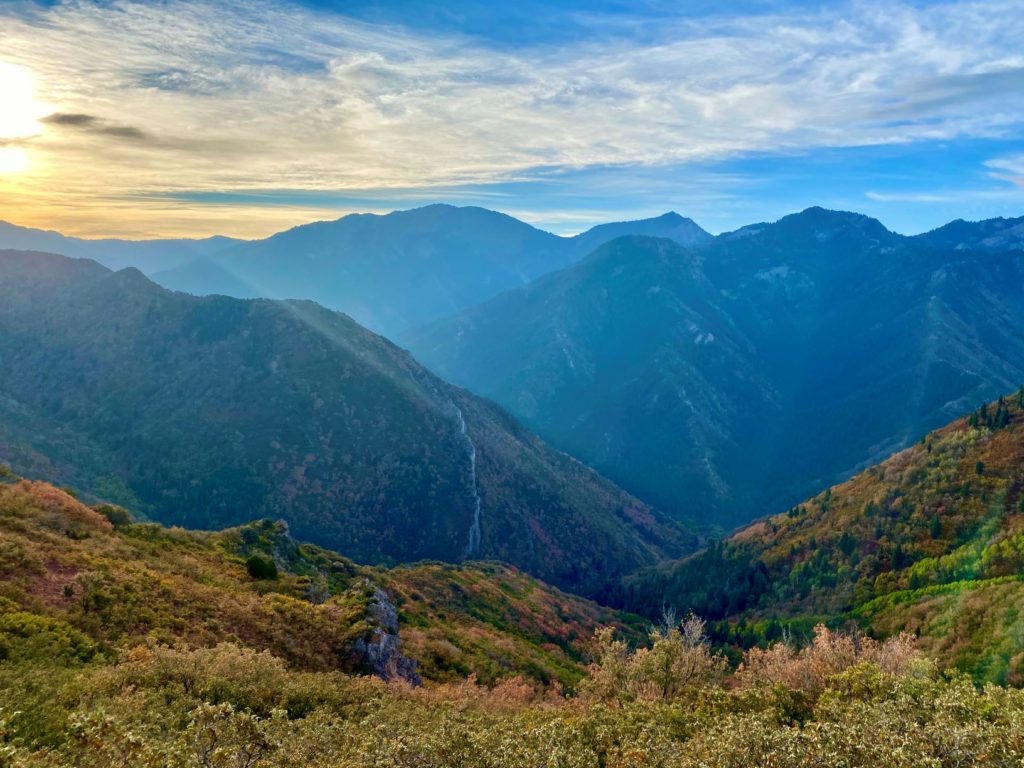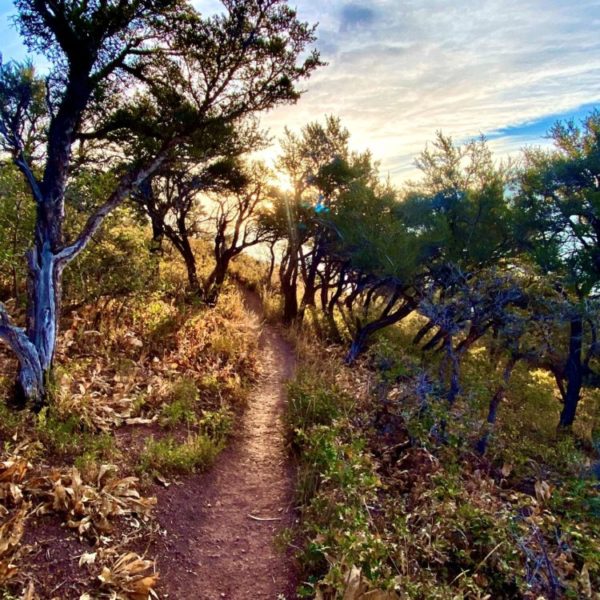Hiking is a great way to enjoy the outdoors, exercise, appreciate natural beauty that you might miss otherwise- at home or the places you travel, and enjoy time with friends and family. I’ve had the chance to hike along the Wasatch front, southern Utah, Wyoming, Arizona, central California, backpacked in New Zealand for a month, and thru-hiked the Appalachian Trail in 2014. I’ve learned a lot through my experiences and am excited to help new hikers get started and avoid the silly mistakes I made.
How to Prep for the Trail
There are a few things you need to consider before hitting the trail.
Hike with a friend: Know someone who likes to hike? Ask them to show you the ropes. It’s good to have another set of eyes to help keep you on the trail and problem solve if something goes wrong. They will also be able to recommend some of their favorite easy trails in the area.
Be real about your current fitness level: Hiking is work but it should also be fun! It’s OK to start on an easier trail and work up to the moderate and difficult hikes. This will help you avoid overuse injuries and burnout. You’ll get your hiking legs soon enough 🙂
Invest in good gear: Get a solid pair of hiking shoes or boots. It’s worth it to go to an outdoor outfitter store and have the sales rep fit you with a properly fitting shoe. Your whole body will thank you!
Find the right trail: AllTrails is a great app to help you find the most popular trails. Each trail has a difficulty rating, recent updates on the trail conditions and directions to the trailhead.
Hiking Tips:
- Have grace for yourself. Again, hiking should be fun! If you need to rest and take a snack break, do it.
- Check the weather before you head out.
- If you are hiking alone, tell someone where you are going and when you expect to be back. Check in with them when you return.
- Wear the right clothes.
- Consider hiking shoes over heavy boots- and no flip flops. Hiking shoes have great traction like boots but, won’t weigh you down on your hike.
- Study the trail map before you leave. Take note of landmarks – e.g. Does the trail follow a stream? Keep in mind if the trail forks and make a mental note if you need to keep right or left at the junction.
- Elevation gain is one of the biggest factors for how tough a hike is going to be. 3,000 ft. of elevation gain over 3 miles up the side of a mountain is a much more challenging hike than 500 ft. elevation gain over 8 miles!
- Drink plenty of water (rule of thumb is 1/2 liter for every hour of hiking, make note that this is weather and incline dependent). I’m better at staying hydrated with a hydration pack vs. having to dig a water bottle out of my pack.
- Please be aware if there are more experienced (faster) hikers behind you- step off to the side and let them pass.
- Pro-Tip: If you meet other hikers descending the trail and the trail is narrow, usually the hiker ascending the trail has the right of way.
- Hike with your butt

Hiking FAQs:
- What should I bring hiking?
- Hiking shoes/boots, day pack, a spare long-sleeve shirt for extra warmth or sun protection, hat, navigation/compass, sunblock, sunglasses, and basic first aid.
- Trekking poles are highly recommended. They give extra stability while crossing creeks, rocky terrain and take the stress off your knees while going downhill.
- Don’t forget snacks and water. Snacks are one of the best things about hiking. Consider how long you will be hiking and the weather. The rule of thumb is to pack 1/2 liter for every hour of hiking.
- What should I wear?
- It depends on the trail, season and elevation.
- Trail: If the trail is narrow, lined by brush, or if you have to scramble over rocks, I would recommend wearing pants over shorts.
- Season: In the summer I usually wear a synthetic t-shirt, running shorts, ball cap, thick socks, and trail shoes. I also bring a lightweight hooded long-sleeve for sun protection if the trail is exposed. In the winter, wear a synthetic t-shirt, long-sleeve, puff jacket, hiking pants or leggings, wool socks and a hat. Layers are your friend- you can always take off layers as you warm up on your hike.
- Elevation: If you are hiking at high elevation the weather can change rapidly. Bring an extra layer such as a light jacket for wind and rain protection just in case.
- Cotton Kills: Avoid wearing cotton clothing as it does of poor job of wicking away sweat from your body which can lead to chaffing and does not keep you warm when it is wet. Wool and synthetic fabrics are best for hiking.
- How should I train for hiking?
- Hiking is a strength and cardio workout. Strength training should focus on your quads and glutes. Examples include squats, lunges, band walks and step-ups/downs. To build up your cardio endurance, mix more hills into your walking or running route. Check out this post if you are training for a thru-hike.
- What equipment do I need?
- Hiking is a pretty budget friendly hobby. I would recommend getting hiking shoes or boots that fit you well, trekking poles, and a small day pack for essentials.
- How far should I hike starting out?
- I would pick a trail with minimal elevation gain/loss and aim for 3-5 miles initially. You can then gradually add 1-2 miles in distance or a hike with greater elevation gain to increase your endurance.
- What is Leave No Trace?
- Short answer, if you pack anything in, you need to pack it out. Take nothing except pictures. We want to conserve our beautiful trails!
With a little planning and the right gear, you can feel confident heading out on the trail. If you have any other questions about hiking, please comment!








Leave a Comment